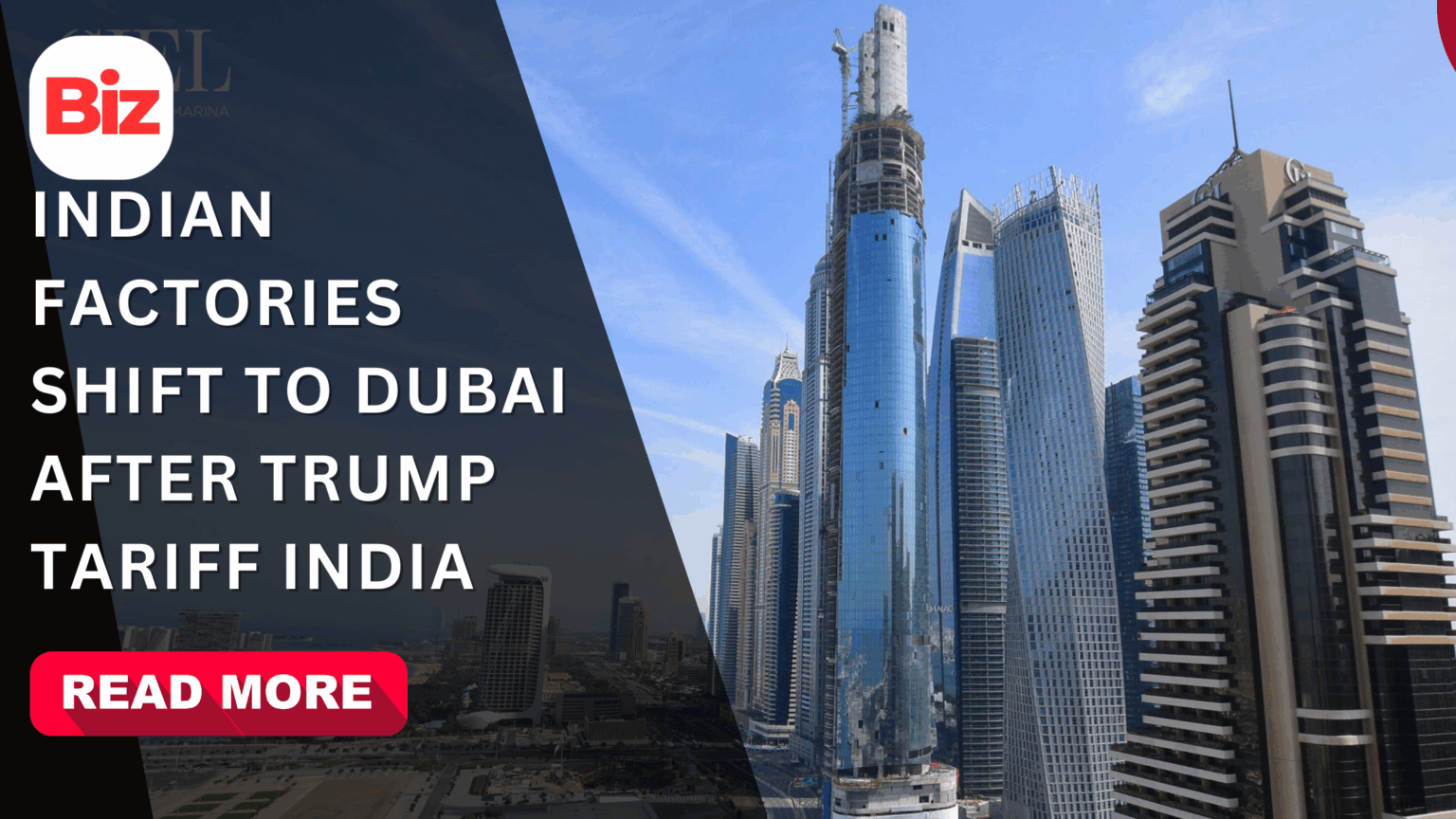International trade is never an easy world to operate in, and with its current situation, it is becoming highly challenging as business persons are reevaluating their approaches at a rapid pace than ever before. The Trump trade war has constituted one of the most disruptive events in that it has drastically raised tariffs on imports of many countries including India. Such increases in tariffs, which are discussed in the media as the Trump tariff India blowback, have struck major industries, such as textiles, gems, seafood, and auto parts.
Many Indian exporters are in turn, considering relocating some of their manufacturing to foreign countries. Dubai, United Arab Emirates (UAE) has been one of the destinations that have received so much attention. Having this good trade environment, tax breaks, and a strategic location, Dubai is becoming the safe haven of exporters who are attempting to keep access to international markets, particularly the US.
Why Indian Factories are eyeing Dubai?
Rising US Tariffs
The Trump tariff India effect is a bitter fact. Industries such as the jewelry industry, the textile industry and the seafood industry that largely rely on the US to export their goods are experiencing cancelation of orders, low demand and lower profit margins. US consumers are not ready to pay an additional price and this puts Indian companies in a fix.
The production can be switched to Dubai to avoid some of these punitive actions, which would provide exporters with an opportunity to retain their market lives in the US.
The Advantage of Location
Dubai is a perfect re-export and logistics hub since it is located on the intersection between Asia, Africa and Europe. Shipment routes are also efficient and less transit time is taken than the other options. Indian exporters have good business relations already in Middle East and therefore Dubai would be a natural extension to their trade strategy.
UAE vs India Currency Rate
The UAE vs India currency rate is another key issue that business people put into consideration. The Indian rupee is also rather unstable in comparison with the UAE dirham that is tied to the US dollar. The peg provides higher predictability of the transactions to the exporters, lowers the exchange rate risks, and eases the financial planning. This is the biggest plus that companies which export to the US would get compared to the fluctuations of the rupee.
Investor-Friendly Policies
- UAE has developed an image of a country that is business friendly in the entire world. Incentives include:
- Most free zones allow 100 percent foreign ownership.
- Low or no corporate taxes within the target industries.
- Tax exemptions on imports and re- imports.
- Quick licensing and simplified regulations.
All these advantages are combined to make Dubai a desirable substitute to the companies that are under pressure due to the Trump trade war.
Problems
The opportunities are really high, but the problems of relocating the factories to Dubai cannot be underestimated.
- High Start-up Investments: To establish factories, rent land and invest in infrastructure in Dubai is a costly affair as opposed to India.
- Labor Costs: Labor intensive sectors like textile can incur more wage bill in Dubai than the relatively cheaper labour in India.
- Adjustments in Supply Chain: Most of the Indian factories rely on local suppliers of raw materials. Moving the production to Dubai can be associated with importation of those materials, which will increase costs.
- Rules of Origin Compliance: To obtain tariff benefits companies should make products comply with standards of trade agreements in terms of origin. In case raw materials are still supplied by India, there might be certain tariff obstacles.
- Cultural and Regulatory Shifts: The different regulatory system, labor regulations, and work culture between Dubai and India can differ quite a bit, and the businesses should adapt to the former.
Sectors Most Likely to Move
Some industries have already indicated to move to Dubai as a response to the effect of the Trump tariff India policy.
- Gems and Jewellery: This is the industry that has suffered most as a result of tariffs and most of the exporters are seeking Dubai as a global jewelry hub.
- Textiles & Apparel: Being labor-intensive and reliant on the US market to a considerable degree, the textile manufacturers are considering partial moving.
- Auto Components: Auto part suppliers find Dubai as a platform to export other than the US and still have a chance of being able to export to other global markets.
- Seafood and Leather: These sectors, which are exposed to high tariffs, can also set up processing centers in Dubai to be competitive.
Practical Steps for Moving
To change over to Dubai, the steps to be followed by Indian companies intending to do so are normally:
- The Feasibility Studies to compare the costs, tariffs, and long term returns.
- Choosing tax and operation advantages in Free Zones such as JAFZA, Dubai Industrial City, or DMCC.
- Adherence to the Laws of the UAE such as those relating to labor, environment and customs.
- Establishing New Supplier Networks or receiving material to sustain production standard.
- Training and Staffing so as to accommodate new process and quality control.
Long-Term Strategy
The implication of the relocation trend is enormous:
- In the case of India: There can be some job losses and loss of revenue in exports in case the factories are moved. Nevertheless, India may keep the more lucrative part such as design, research and development as well as supply of raw materials.
- In the case of Dubai: Increased foreign direct investment (FDI), employment, industrial development, and consolidation of its position as an international trade hub.
- In the case of Global Trade: This trend highlights the manner in which companies establish themselves in the face of tariff wars and unstable policies by finding more stable options.
The Trump trade war is an indication of the fact that the global supply chains are vulnerable to political choices. Companies that have varied their bases and not over-rely on a single nation are at a better position to survive and prosper.
Conclusion
The flood of US tariffs on Indian products, which is generally regarded as a subset of the Trump trade war, has compelled Indian exporters to go global. Dubai has become the most appealing location to move the factories with tax relief, infrastructure and exchange rates stability to many.
Although the above issues like high cost and supply chain realignment are still to be addressed, the long term gains can serve to counterbalance the challenges in some industries. The UAE currency rate against the Indian one is stable, and the global connectivity of Dubai provides Indian exporters with a strategic edge when it comes to finding their way out of stormy trade policies.
Finally, the decision to relocate the factories to Dubai is not only about avoiding the tariffs but also about business future-proofing of businesses in the global economy which is uncertain.








